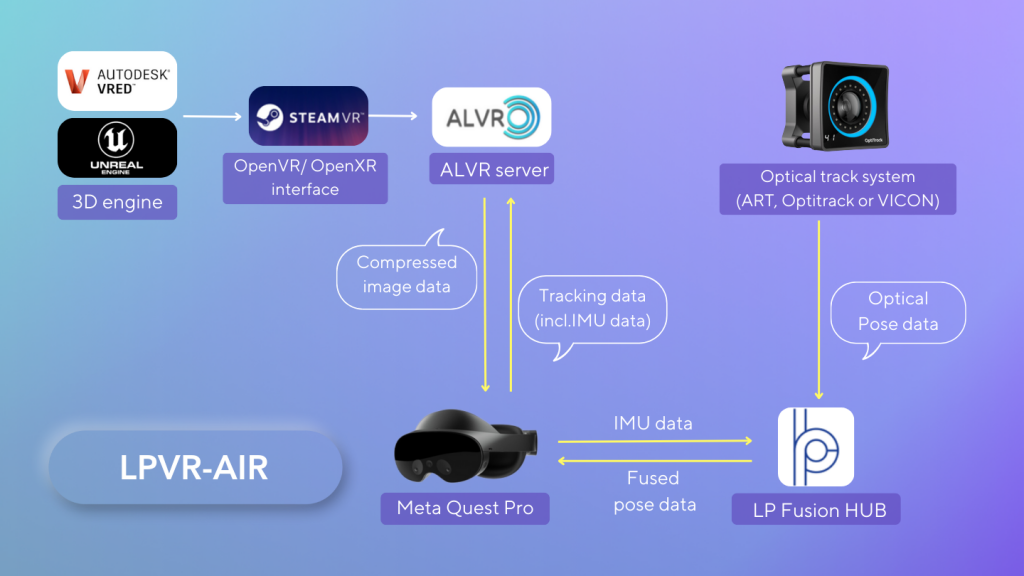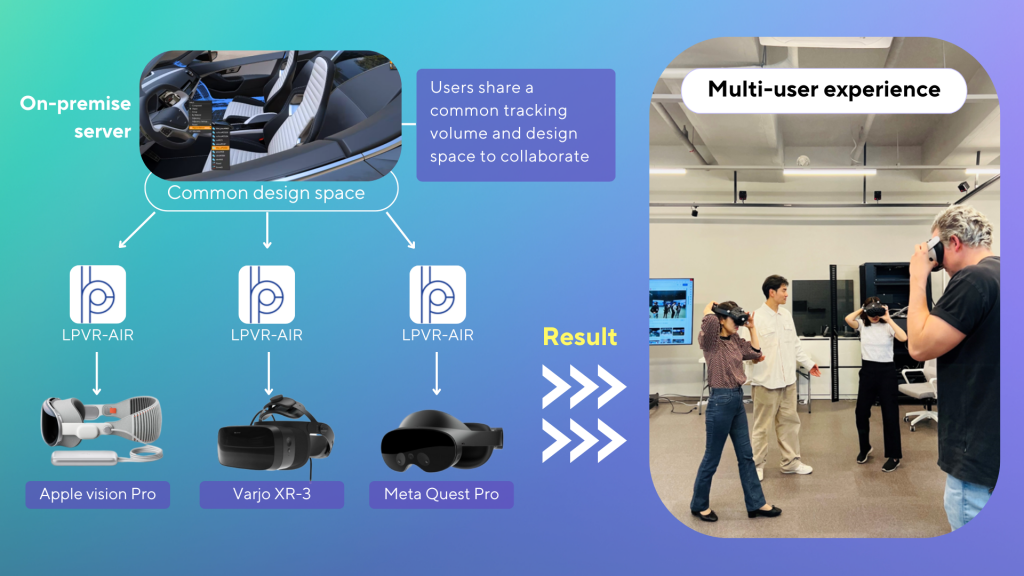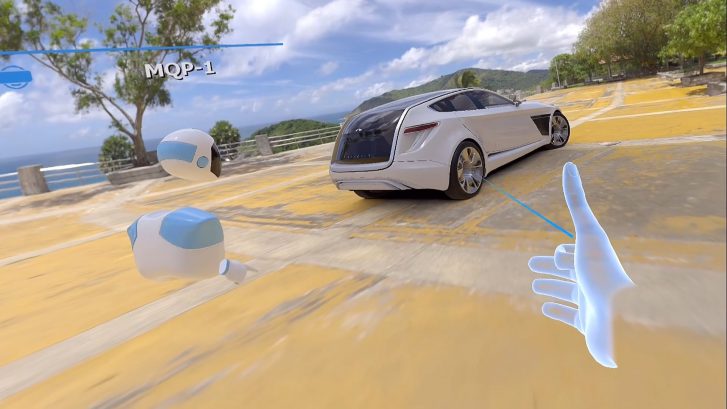Wireless Content Streaming
LPVR-AIR is LP-Research’s wireless VR streaming solution. Content is generated on a rendering computer and wirelessly streamed to a VR headset to be displayed. At the same time the pose, orientation and position, of the headset is calculated from tracking data from a camera system and inertial measurements on the headset itself.
The core tracking algorithm of LPVR-AIR is similar to our LPVR-CAD solution. We are combining this established tracking method with wireless data streaming.
This has a few significant advantages:
- Rendering detailed VR content is computationally too heavy to do all calculations on embedded hardware on the headset itself. Therefore, content needs to be rendered on an external computer and the result is streamed to the headset. LPVR-AIR allows doing this.
- Designers in eg. the automotive space have their own preference of applications to create content, such as Autodesk VRED. These applications usually don’t run on a headset’s embedded hardware. With LPVR-AIR dsigners can use any application that normally works with a Windows based PC.
Technical Implementation
See below a block diagram of how the LPVR-AIR system is implemented. While we in principle support any Android based standalone VR headset, we currently focus on the Meta Quest line of HMDs, specifically Meta Quest Pro and Meta Quest 3.

Our solution effectively enables designers to explore a large 3D design space with full high resolution renderings using a lightweight headset. LPVR-AIR even allows for the interaction of several users in a design space. An example of such a use case is shown in the video on the top of this post. Two users in our office in Tokyo, being tracked by LPVR tracking, explore a car design together.
Improved Design Process
This opens new possibilities for automotive, industrial, architecture and many more design applications, leading to increased performance of designers and a higher success rate of their designs. LPVR-AIR is based on the ALVR wireless streaming engine, which we have extended to work with our FusionHub sensor fusion solution.
Long term, the ALVR engine makes it easy for us to support a number of different HMDs, additionally to Meta Quest also the Varjo and eventually the Apple Vision Pro series as shown in the image below. With VRED we have an outstanding rendering solution at the base of LPVR-AIR that allows designers to create photo-realistic content while providing extensive collaboration abilities.
If you would like to move towards immersive and interactive 3D design, don’t hesitate to consult with us and give our LPVR-AIR on-premise collaborative design solution a try!


